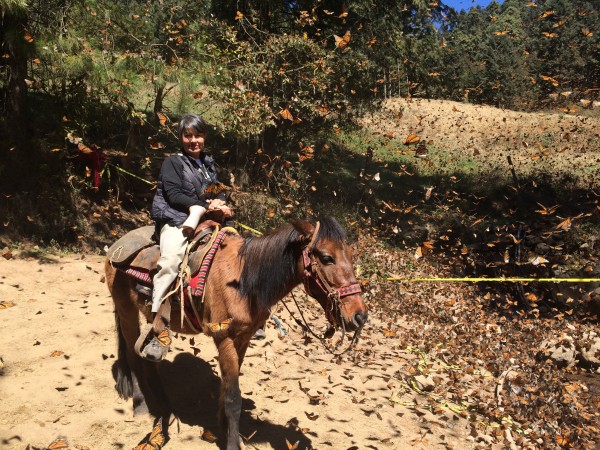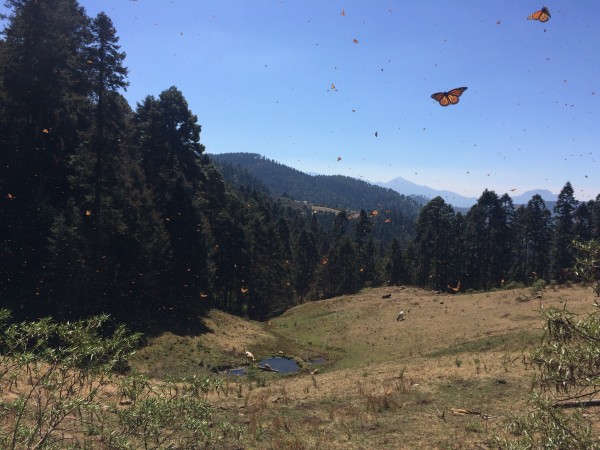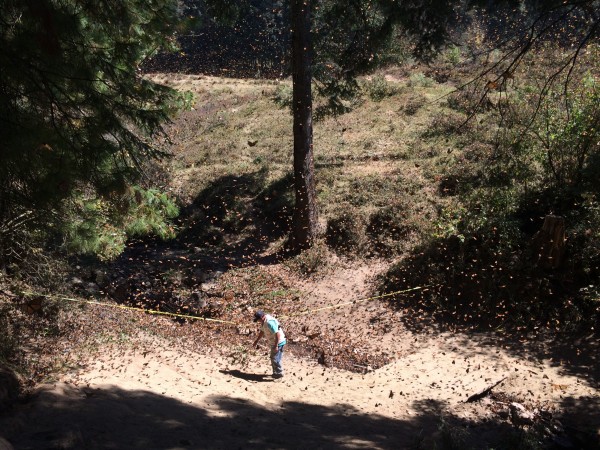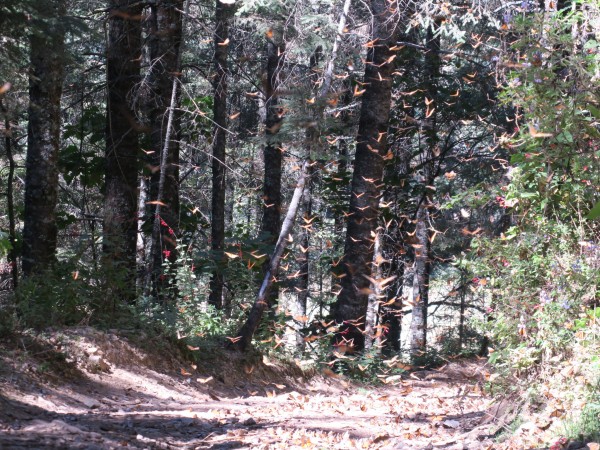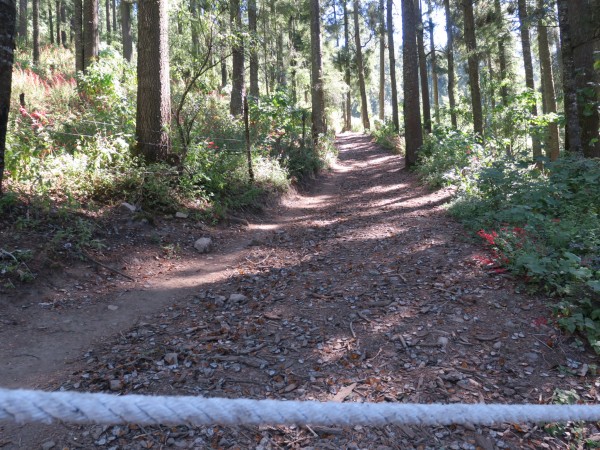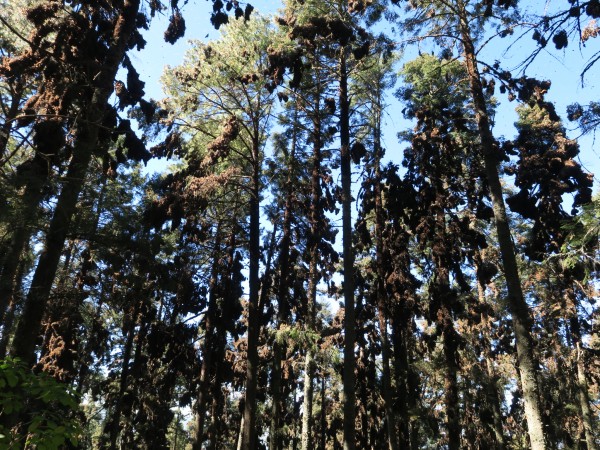Letter from Estela
The Monarch Season Sustains its Peak!
Tuesday, February 19, 2019
Dear friends:
The monarch season has sustained an overwhelming peak for a whole month now! After visiting the sanctuaries, people return to town simply in shock by their impression at the experience. Travelers are here from as far as the Belgium, Ukraine, China, Japan, the Czech Republic and, of course, loyal followers from the United States and Canada. Everybody is amazed completely!
Yesterday’s late-afternoon last-minute-news was most surprising: Diego, a guide at Sierra Chincua colony, announced that the very first monarchs started migrating north during the past weekend (Feb 16-17). Early departure was predicted by many locals all over, even in Angangueo, after seeing so many monarchs cascading down to town every day for weeks now. We don’t usually see signs of departure like this until mid-March, a full month from now! He says they will intensify monitoring activity in Sierra Chincua immediately today, in order to confirm this probable too early event.
El Rosario Sanctuary
The season keeps reaching an exceptional moment up to now. But I personally noticed yesterday, and many guides agree, that many clusters have now started to diminish in size and density. The colony seems to be very, very slightly dispersing right now, and showing extreme active and mating behavior all over the area. For days now the butterflies are clouding and carpeting the horses’ trail all over. It is a truly stunning experience and not to be missed!
Along the pathway, one can see thousands of monarchs that have perished. This might seem abundant, but could be considered normal given the time of the season and the dense population this year.
Sierra Chincua Sanctuary
Very young guide Edwin, 10, attending 5th grade at elementary and great-great grand child to an Ejidatario family inheriting the family rights to gradually become an active Ejidatario in this Sanctuary’s organization said:
“We families keep repeating this has been one of the best years in population for a very long time. On weekends, there are hardly enough horses and restaurants and guides to assist all visitors! Great-great-grand Dad says we should reinforce efforts to keep our forests dense green for Monarchs to find their shelter intact every year”.
Rather scarce mating in this Sanctuary is occurring. Monarchs continue to move slightly down into the canyon site in “El Tepozán”, as if looking for the cooler shady shelter of the giant Oyamel trees there. This distance makes the horseback-walking time to the colony 50 to over 60 minutes to reach the beautiful natural wonder.
Temperatures are rising to over 24-26 Centigrade now with unusually intense sunlight and sharp heat falling upon us. This is very concerning compared to our region’s historical climate conditions. This unusual season has us marveling on the one hand, but somewhat concerned on the other, at trying to decipher Nature’s foretelling by monarchs' behavior at their overwintering sites this year.
Until next week,
Estela Romero
Journey North
Angangueo, Michoacan, México

